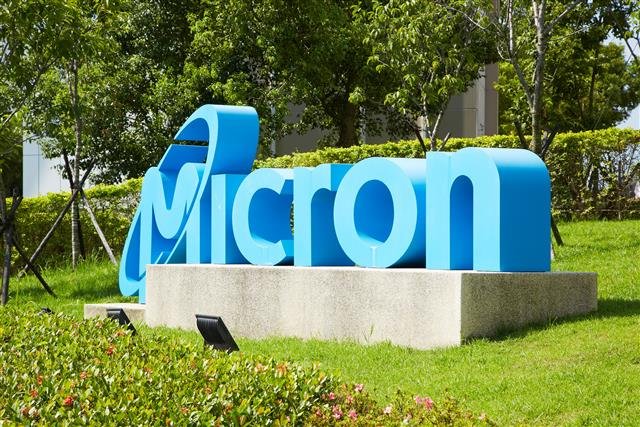Micron Technology has become a major player in the global semiconductor market. As of 2025, the company continues to lead the development of advanced memory and storage solutions. Micron’s innovations are found in everything from smartphones and PCs to cloud computing and artificial intelligence (AI). But while the company is seeing solid growth, it also faces multiple challenges in the highly competitive tech landscape.
This article takes a deep dive into Micron Technology’s journey, market performance, technological advancements, and the issues it faces today.
A Quick Look at Micron Technology
Founded in 1978 and headquartered in Boise, Idaho, Micron Technology is a leading manufacturer of memory and storage products. These include:
- DRAM (Dynamic Random Access Memory)
- NAND Flash Memory
- Solid State Drives (SSDs)
- Mobile and Embedded Storage Solutions
Micron serves a wide range of industries such as data centers, mobile devices, automotive, and consumer electronics. With a focus on innovation, the company invests heavily in research and development (R&D) to create faster, smaller, and more efficient chips.
Micron’s Role in the Semiconductor Industry

The semiconductor industry is essential to the modern digital world. Micron Technology, with its focus on memory and storage, plays a crucial role in keeping the tech ecosystem running smoothly.
As data usage explodes with the rise of AI, 5G, and the Internet of Things (IoT), Micron’s DRAM and NAND chips are in high demand. Cloud service providers, smartphone makers, and even electric vehicle companies rely on Micron products.
Global Reach
Micron operates globally, with manufacturing facilities in the U.S., Japan, Taiwan, Singapore, and other countries. It employs tens of thousands of people and works with major tech companies like Apple, Microsoft, and Nvidia.
Financial Performance and Market Growth
In its recent financial reports, Micron Technology showed strong revenue recovery after a challenging 2023. The global chip shortage, caused by pandemic disruptions and increased demand, had initially slowed production. However, Micron bounced back thanks to strategic supply chain improvements and expanded production capacity.
Key Financial Highlights (as of early 2025):
- Revenue: Over $30 billion annually
- Gross Margin: Improved due to better pricing in the memory sector
- R&D Spending: Approximately $3.5 billion per year
- Stock Performance: Steady growth driven by investor confidence
Despite fluctuations in the memory market, Micron has managed to maintain a strong financial position by staying ahead of technological trends and improving manufacturing efficiency.
Technological Innovations
One of Micron Technology’s biggest strengths is its innovation. The company has recently introduced several advanced products and technologies.
1. LPDDR5X and DDR5 DRAM
Micron was one of the first to bring LPDDR5X to market, providing higher speeds and power efficiency for smartphones and laptops. DDR5 DRAM, on the other hand, is being adopted by data centers and gaming PCs for better performance.
2. 232-Layer NAND Technology
Micron is pushing the limits of NAND technology. Its 232-layer NAND is among the most advanced in the industry. This means more storage capacity in smaller spaces, which is vital for mobile devices and enterprise-grade SSDs.
3. AI and Machine Learning Integration
Micron is also working on specialized memory solutions that improve the performance of AI and machine learning tasks. These products are helping companies process huge amounts of data faster and more efficiently.
Micron Technology and Artificial Intelligence

AI is one of the fastest-growing sectors in tech, and Micron is positioning itself at the heart of it. From voice assistants to smart manufacturing, AI systems rely on high-speed memory to function effectively.
Micron’s DRAM and NAND technologies are critical for:
- AI model training
- Real-time data analysis
- Edge computing in IoT devices
- Autonomous vehicles and robotics
As AI adoption increases, Micron stands to benefit significantly by supplying the memory that powers these systems.
Key Challenges for Micron in 2025
Even with its many strengths, Micron Technology faces a number of challenges:
1. Market Cycles and Price Volatility
Memory markets are known for being cyclical. Prices can swing dramatically based on supply and demand. Overproduction often leads to falling prices, which can hurt profits. Micron must carefully manage inventory and forecast demand to avoid losses.
2. Geopolitical Risks
Micron has faced political tensions, particularly between the U.S. and China. In 2023, China imposed restrictions on Micron’s products, citing security concerns. While Micron continues to operate globally, it must navigate increasing trade barriers and regulatory scrutiny.
3. High R&D Costs
While innovation is vital, it is also expensive. Staying ahead of competitors like Samsung and SK Hynix requires continuous investment in R&D. Micron must balance innovation with cost efficiency.
4. Supply Chain Challenges
Despite improvements, the global supply chain for semiconductors remains fragile. Natural disasters, political conflicts, or sudden demand spikes can disrupt production and delivery.
Sustainability and Corporate Responsibility
Micron Technology is also focusing on sustainability. The company has pledged to reduce its carbon footprint and use renewable energy at its manufacturing plants.
Environmental Goals:
- Carbon neutrality by 2050
- Reduce water usage and chemical waste
- Increase use of recycled materials in chip packaging
Micron’s sustainability efforts not only help the environment but also appeal to investors and consumers who prefer eco-friendly brands.
Workforce and Diversity
Micron values diversity and inclusion. The company runs multiple programs to support women in tech and underrepresented minorities. It also offers education and upskilling programs to help employees grow their careers.
Competitors and Industry Position
Micron faces tough competition from:
- Samsung Electronics (South Korea)
- SK Hynix (South Korea)
- Kioxia (Japan)
- Western Digital (USA)
Despite this, Micron holds a strong position in the global memory and storage market. Its consistent innovation and strategic partnerships give it an edge.
What’s Next for Micron Technology?
Looking ahead, Micron Technology plans to focus on:
- AI-driven memory products
- Advanced NAND and DRAM scaling
- Expanding into automotive and industrial markets
- Building new fabs (fabrication plants) in the U.S. and abroad
Micron’s future depends on how well it adapts to the evolving tech landscape, especially as demand for faster and more efficient memory continues to grow.
Final Thoughts
Micron Technology remains one of the most important companies in the global semiconductor space. Its ability to innovate, manage market fluctuations, and explore new sectors like AI and automotive memory keeps it at the forefront of technology.
In 2025, Micron is growing fast, but it also needs to stay cautious. The world of semiconductors is competitive and unpredictable. However, with its strong leadership and clear vision, Micron is well-positioned to thrive in the years ahead.
Read Next – Intel Corporation’s Bold Plans to Dominate AI Chips






